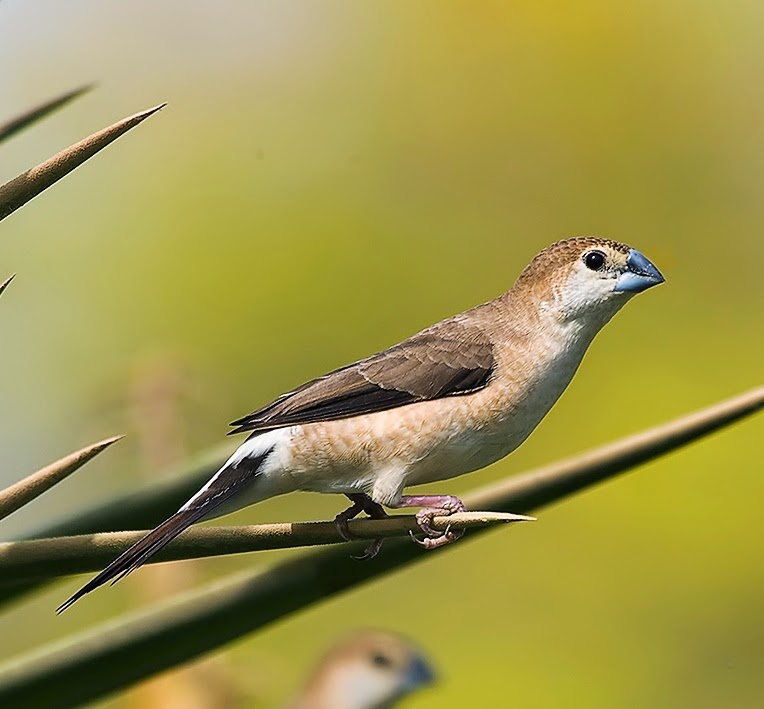Lonchura malabarica
 |
| Photo by Per Jespersen (Per Jespersen) |
Common name:
white-throated munia (en); bico-de-chumbo-indiano (pt); capucin bec-de-plomb (fr); capuchino picoplata indio (es); Indischer silberschnabel (de)
Taxonomy:
Order Passeriformes
Family Estrildidae
Range:
This species is found throughout India and Sri Lanka, into Bangladesh, Nepal and Pakistan, and also around the Persian Gulf in southern Iran, Oman and the UAE. It has been introduced to Saudi Arabia, Israel, Bahrain, Kuwait, Jordan, Qatar, Puerto Rico, Hawaiian islands and the Virgin islands.
Size:
These birds are 11-11,5 cm long and weigh 10-14 g.
Habitat:
The white-throated munia is found in arid, open arid, such as dry grasslands and scrublands, dry savannas, pastures and arable land. They are present from sea level up to an altitude of 1.200 .
Diet:
They usually forage in flocks of up to 60 individuals, taking the seeds of various sedges and grasses, as well as ants and other small insects and, occasionally, nectar.
Breeding:
White-throated munias can breed all year round, generally beginning with the onset of rains. The female builds an irregular, oval nest, using material collected by the male. The nest is lined with feather and usually placed in a low thorny scrub or tree, up to 3 m above the ground. The female lays 3-8 eggs which are incubated by both parents for about 11 days.The chicks are fed by both parents and fledge about 19 days after hatching, only becoming fully independent 1 weeks later. Each pair can raise 4 broods per year.
Conservation:
IUCN status - LC (Least Concern)
This species has a very large breeding range and is described as common or locally common. The population is suspected to be stable in the absence of evidence for any declines or substantial threats.
No comments:
Post a Comment